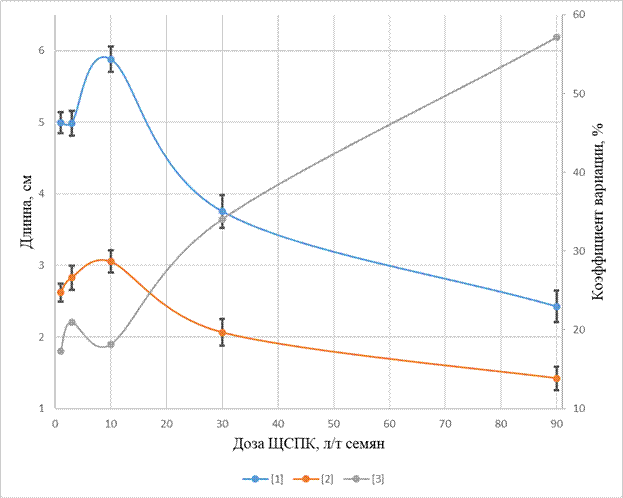Stimulation of seed germination with a mixture of sodium salts of mono- and dicarboxylic acids
DOI:
https://doi.org/10.31251/pos.v3i3.119Keywords:
plant growth stimulant, sodium salts of carboxylic acids, alkaline effluent from caprolactam production, seed germination, seedling growth, spring wheatAbstract
The aim of research: Study the possibility of using a mixture of sodium salts of mono- and dicarboxylic acids as a plant growth stimulant for pre-sowing treatment of spring wheat seeds.
Location and time of the study. West Siberia, 2016.
Methodology. Evaluation of the effectiveness of alkaline effluent from caprolactam production (AECP) on germination of spring wheat seeds in two incubation experiments for 3 and 8 days and a laboratory experiment (in the light) for 11 days with seed pre-sowing treatment at different doses of AECP ranging from 0 to 90 liters/ton of seed.
Results. In a series of experiments, it was found that AECP, which is a mixture of sodium salts of carboxylic acids, can be used as a plant growth stimulant for pre-sowing treatment of spring wheat seeds. The dosage of AECP is of utmost importance, the top limit of the application rate is recommended as 30 liters of AECP per a ton of seed. The most pronounced positive effect of the growth stimulant was displayed at the rate of 20 l/t. This AECP rate contributed to an increase in germinal root and leaf weight by 35% and 30%, respectively, compared with the control when seeds were germinated in the light for 11 days. Seed germination and the proportion of seedlings with leaves ≥ 3 cm in length were also maximal at this AECP application rate.
Conclusions. To stimulate the germination of spring wheat, it is recommended to use AECP for pre-sowing treatment at the rate of 15– 20 liters per ton of seed.
Downloads

Downloads
Published
How to Cite
Issue
Section
License
Copyright (c) 2021 The Journal of Soils and Environment

This work is licensed under a Creative Commons Attribution 4.0 International License.






